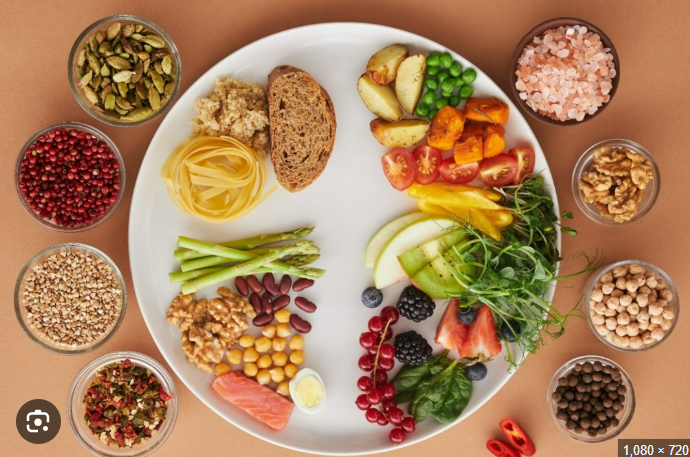
In recent years, plant-based diets have surged in popularity—not just among vegans and vegetarians but also with health-conscious individuals and culinary enthusiasts alike. This growing trend isn’t merely about eating less meat; it’s a lifestyle shift focused on health, sustainability, and mindful living. In this guide, we’ll explore what a plant-based diet is, its many benefits, and share a collection of mouthwatering recipes that prove healthy food can be both nutritious and delicious.
What is a Plant-Based Diet?
A plant-based diet emphasizes whole, minimally processed foods derived from plants. This includes:
- Fruits and vegetables
- Whole grains
- Legumes (beans, lentils, peas)
- Nuts and seeds
- Plant-based oils (like olive or avocado oil)
Unlike vegan or vegetarian diets, a plant-based diet doesn’t necessarily exclude all animal products. Instead, it focuses on prioritizing plant-based foods while limiting or avoiding meat, dairy, and eggs depending on individual goals or ethical considerations.
Health Benefits of a Plant-Based Lifestyle
Numerous studies have highlighted the powerful health benefits of adopting a plant-based diet. These include:
1. Improved Heart Health
A diet rich in whole grains, fruits, and vegetables is naturally low in saturated fat and cholesterol, which helps reduce the risk of cardiovascular disease.
2. Weight Management
Plant-based foods are often lower in calories and high in fiber, which promotes fullness and can help with weight loss or maintenance.
3. Lower Risk of Chronic Diseases
Research shows that plant-based diets are associated with a reduced risk of type 2 diabetes, certain types of cancer, and high blood pressure.
4. Better Digestive Health
The high fiber content in plant foods supports a healthy gut microbiome and regular digestion.
5. Environmental Benefits
Eating more plants reduces the demand for livestock farming, which contributes significantly to greenhouse gas emissions, deforestation, and water use.
Tips for Transitioning to a Plant-Based Diet
Making the switch to a plant-based diet doesn’t have to be overwhelming. Here are some simple tips to help ease the transition:
- Start Slow: Begin by incorporating one plant-based meal a day.
- Meatless Mondays: Try going completely meat-free one day a week.
- Stock Your Pantry: Keep beans, lentils, grains, and frozen vegetables on hand.
- Learn to Read Labels: Understand food ingredients and watch for hidden animal products.
- Explore New Cuisines: Indian, Mediterranean, Middle Eastern, and Asian cuisines often feature plant-forward meals.
Plant-Based Recipe Ideas
Now for the fun part—cooking and eating! Here are some easy and flavorful plant-based recipes that anyone can make, whether you’re a kitchen pro or a beginner.
1. Creamy Chickpea Salad Sandwich
Servings: 4
Prep Time: 10 minutes
Ingredients:
- 1 can chickpeas (drained and rinsed)
- 2 tbsp vegan mayo or mashed avocado
- 1 tbsp Dijon mustard
- 1/4 cup diced celery
- 1/4 cup diced red onion
- Salt and pepper to taste
- Whole grain bread, lettuce, tomato
Instructions:
- Mash chickpeas in a bowl until flaky but not mushy.
- Mix in mayo (or avocado), mustard, celery, onion, salt, and pepper.
- Serve on whole grain bread with lettuce and tomato for a satisfying lunch.
2. Sweet Potato & Black Bean Tacos
Servings: 4
Prep Time: 15 minutes
Cook Time: 25 minutes
Ingredients:
- 2 medium sweet potatoes, cubed
- 1 can black beans, drained
- 1 tsp chili powder
- 1 tsp cumin
- Olive oil
- Corn tortillas
- Toppings: avocado, salsa, cilantro, lime
Instructions:
- Toss sweet potato cubes in olive oil and spices, roast at 400°F for 25 minutes.
- Warm black beans in a skillet with a splash of lime juice.
- Fill tortillas with sweet potatoes and black beans. Add toppings as desired.
3. Creamy Vegan Alfredo Pasta
Servings: 4
Prep Time: 10 minutes
Cook Time: 15 minutes
Ingredients:
- 1 box whole wheat fettuccine
- 1 cup raw cashews (soaked in hot water for 20 minutes)
- 1 ½ cups unsweetened plant milk
- 2 tbsp nutritional yeast
- 2 garlic cloves
- Juice of ½ lemon
- Salt and pepper
- Steamed broccoli or spinach (optional)
Instructions:
- Cook pasta according to package instructions.
- Blend soaked cashews with plant milk, garlic, nutritional yeast, lemon juice, salt, and pepper until smooth.
- Pour sauce over cooked pasta and toss with vegetables if desired.
4. Vegan Lentil Shepherd’s Pie
Servings: 6
Prep Time: 20 minutes
Cook Time: 40 minutes
Ingredients:
- 1 cup green or brown lentils
- 1 onion, chopped
- 2 garlic cloves, minced
- 2 carrots, diced
- 1 cup peas
- 2 tbsp tomato paste
- 1 tsp thyme
- 3 cups mashed potatoes (use non-dairy milk and vegan butter)
Instructions:
- Cook lentils in water until tender (about 25 minutes), then drain.
- Sauté onion, garlic, and carrots until soft. Add tomato paste, thyme, and peas.
- Stir in cooked lentils and season to taste.
- Spread into a baking dish, top with mashed potatoes, and bake at 375°F for 20 minutes.
5. No-Bake Vegan Energy Bites
Servings: 12 bites
Prep Time: 10 minutes
Ingredients:
- 1 cup rolled oats
- ½ cup peanut butter or almond butter
- 1/3 cup maple syrup
- ¼ cup dark chocolate chips
- 1 tbsp chia seeds
- 1 tsp vanilla extract
Instructions:
- Mix all ingredients in a bowl.
- Form into bite-sized balls.
- Chill for 20 minutes before eating. Store in the fridge for up to one week.
6. One-Pot Vegan Chili
Servings: 6
Prep Time: 15 minutes
Cook Time: 30 minutes
Ingredients:
- 1 onion, diced
- 3 garlic cloves, minced
- 1 bell pepper, chopped
- 1 zucchini, chopped
- 1 can black beans
- 1 can kidney beans
- 1 can diced tomatoes
- 2 tbsp tomato paste
- 1 tbsp chili powder
- 1 tsp cumin
- Salt and pepper to taste
Instructions:
- In a large pot, sauté onion and garlic until fragrant.
- Add bell pepper and zucchini, cook until slightly softened.
- Stir in beans, tomatoes, paste, and spices. Simmer for 30 minutes.
Making Plant-Based Meals Affordable
Some people believe plant-based diets are expensive, but that’s a myth. Here are a few strategies to keep costs low:
- Buy in bulk: Grains, beans, and oats are much cheaper when bought in larger quantities.
- Use frozen vegetables: These are just as nutritious and last longer.
- Plan your meals: A weekly plan reduces food waste and last-minute takeout spending.
- Cook at home: Home-prepared meals save money and allow you to control ingredients.
- Shop local and seasonal: Local farmers’ markets often have affordable produce.
Common Nutritional Questions
1. Where do you get your protein?
There’s plenty of protein in plant foods! Lentils, beans, tofu, tempeh, quinoa, nuts, seeds, and even vegetables like broccoli provide adequate protein when consumed as part of a balanced diet.
2. Do you need supplements?
Some nutrients—like vitamin B12, vitamin D, and omega-3s—can be harder to obtain from a strictly plant-based diet. A B12 supplement is commonly recommended, and fortified foods or plant-based omega-3s from flaxseed or algae are helpful.
3. What about iron and calcium?
Leafy greens, beans, lentils, tofu, and fortified plant milks are excellent sources of iron and calcium. Eating vitamin C-rich foods (like oranges or bell peppers) alongside iron-rich foods helps improve absorption.
Final Thoughts
Adopting a plant-based diet is a powerful step toward a healthier lifestyle and a more sustainable planet. It doesn’t have to be restrictive or boring—on the contrary, it can open your world to new flavors, cultures, and creative culinary experiences. Whether you’re ready to go all-in or just want to add more plants to your plate, every bite makes a difference.
Start with the simple recipes in this article, experiment with ingredients, and discover how satisfying and vibrant plant-based living can be. Eating well is one of the most profound forms of self-care, and with plants on your plate, you’re doing good for yourself and the world around you.





















